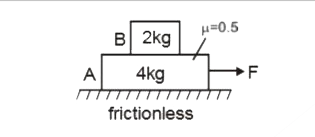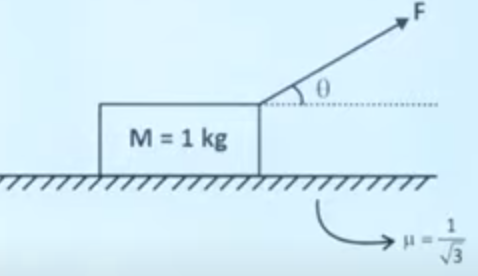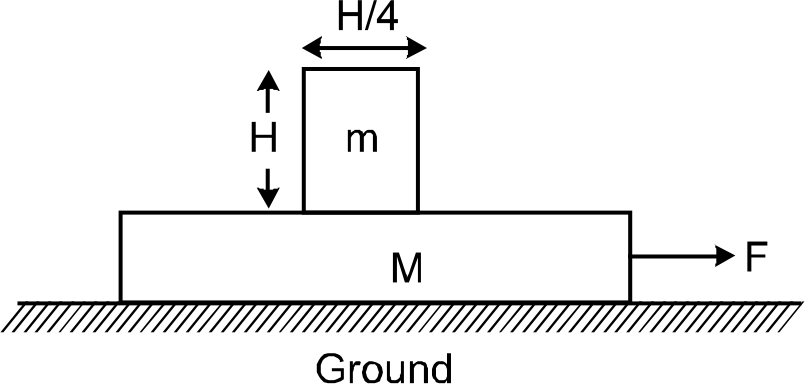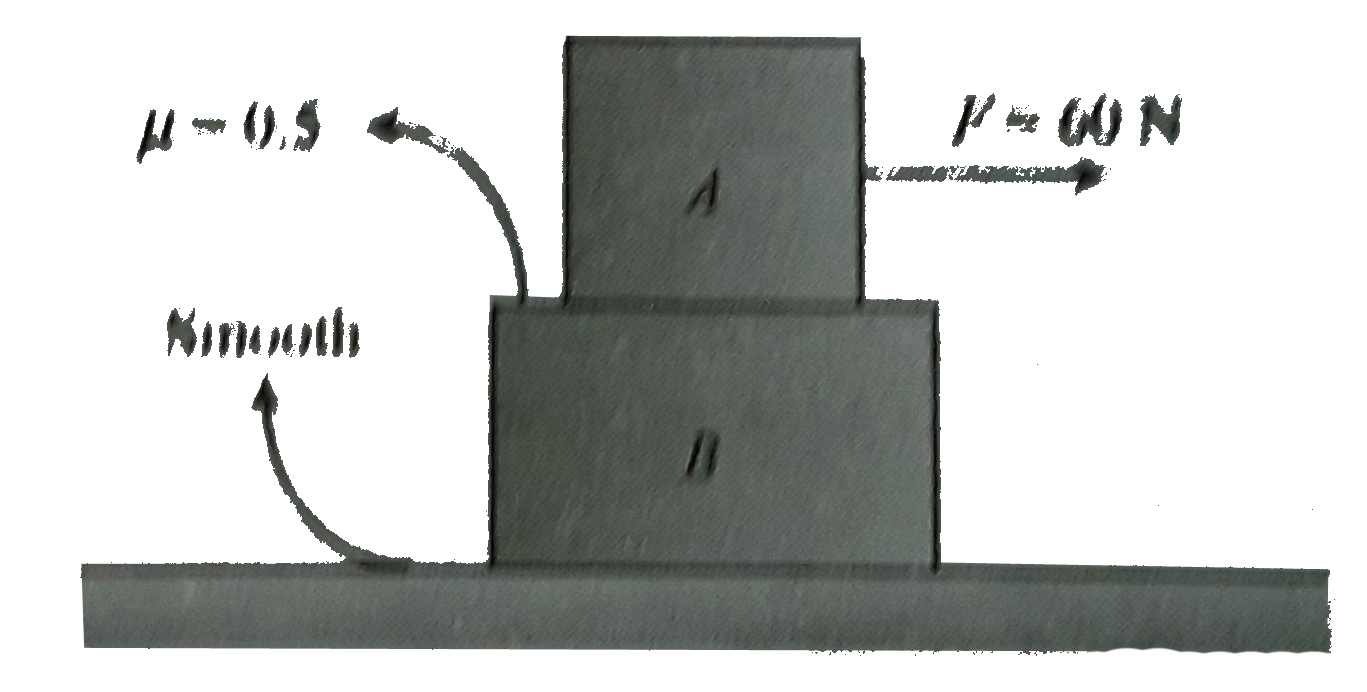In above example find maximum F for which two blocks will move together.
Observing the critical situation where friction becomes limiting.

∴F−fmax=10a……….(1)
fmax=20a………(2)
∴F=75N
Topper's Solved these Questions
- BOOK - MOTIONCHAPTER - NLM & FRICTIONEXERCISE - EXAMPLE47videos
NLM & FRICTION
- BOOK - MOTIONCHAPTER - NLM & FRICTIONEXERCISE - SOLVED EXAMPLE16videos
NLM & FRICTION
- BOOK - MOTIONCHAPTER - NEWTON'S LAWS OF MOTION & FRICTION EXERCISE - Exercise - 3 Section-B12videos
NEWTON'S LAWS OF MOTION & FRICTION
- BOOK - MOTIONCHAPTER - ONE DIMENSION MOTIONEXERCISE - Exercise - 3 |Section - B Previous Year Problems | JEE MAIN12videos
ONE DIMENSION MOTION
Similar Questions
Knowledge Check
- Question 1 - Select One
A 4.0 kg block is put on top of a 5.0kg block. In order to cause the top block to slip on the bottom one, a horizontal force of 12N must be applied to the top block. Assuming a friction less table the maximum horizontal force F which can be applied to the lower block so that the blocks, will move together should be
 A<30NB<27NC<15ND<9N
A<30NB<27NC<15ND<9N

Find out the maximum value of F for which both the blocks will move together.View SolutionTwo block , with masses m1 and m2 are staked as shown in fig and placed on a frictionless horizontal surface . There is a friction between the two block .An external force of magnitude F is applied to the top block at an angle α below the horizontal . The coefficient of friction between m1 and m2 are μs
b. If the two blocks move together, find their acceleration
b . Calculate the maximum value of force so that blocks will move together
 View Solution
View SolutionFind out Fmin so that block will move
 View Solution
View SolutionTwo blocks of mass 2kg and 1kg are at rest on a smooth surface as shown. There is friction between 2kg and 1kg block with μ=0.5. Find maximum force to be applied on 1 kg for the two blocks to move together.
 View Solution
View SolutionWhat is the maximum value of force, so that both the blocks will move together ?
 View Solution
View SolutionThe coefficient of friction between the blocks are μs=0.3 and μk=0.2. (a) Find the maximum value of F so that the blocks move together. (b) If force F is twice the value found in (a), find the acceleration of each block.
 View Solution
View SolutionA block of mass m=2kg of shown dimensions is placed on a plank of mass M = 6Kg which is placed on smooth horizontal plane. The coefficient of friction between the block and the plank is μ=13. If a horizontal froce F is applied on the plank, then find the maximum value of F (in N) for which the block and the plank move together
 View Solution
View Solution


